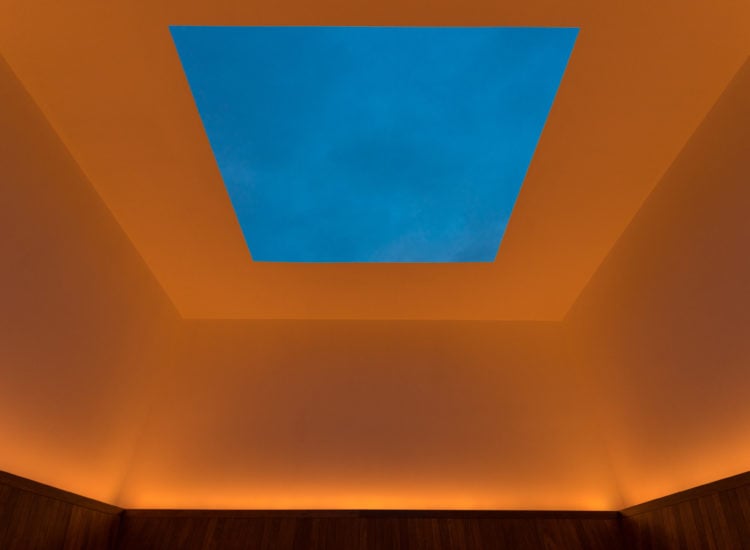The much-loved, 36-year-old installation by legendary artist James Turrell is now open to the public at MoMA PS1, following a three-year restoration. Turrell is renowned for his “Skyspaces,” in which the artist modifies existing architecture or creates spaces with cutouts in the ceiling in order to frame a view of the sky.
New York’s only Skyspace, the one at MoMA PS1, has been rehabbed in collaboration with the artist. This particular Skyspace’s claim to fame is that it’s the first one Turrell executed in the US and just the second the artist ever created. It has been a favorite since the early days of PS1, way before it became part of the Museum of Modern Art—it was commissioned in 1976, the year of the institution’s founding.
The installation is so beloved, in fact, that 400 tickets to 20 after-hours viewings sold out in 30 minutes.
“We are pleased to bring this important work back on view in a new, 21st-century iteration that adds a dynamic lighting program, allowing the artist to realize more dramatic effects against the sky’s atmospheric light,” said Klaus Biesenbach, MoMA PS1 director and chief curator at large at the Museum of Modern Art. The new version of the piece features a lighting effects that will kick in at sunrise and sunset, in which LED lights shift their brightness and color in a way that’s timed to the sun’s changing light.
One of the leaders of California’s Light and Space movement, Turrell was the subject a three-museum retrospective in 2013, at the Museum of Fine Arts Houston, New York’s Guggenheim Museum, and the Los Angeles County Museum of Art. His Roden Crater, a monumental earth work begun in 1979 and still ongoing, is creating an observatory our of a volcanic crater in the Arizona desert. He was named a MacArthur “genius” in 1984.
All that said, younger viewers might know his work only for the appearance of an ersatz version of one of his installations in the video for pop superstar Drake’s hit tune “Hotline Bling.” Turrell publicly disavowed the video, saying he had nothing to do with it, though the resulting discussion did produce a rush of new interest in his work.
Unlike the video, the MoMA PS1 Skyspace is the real thing.
